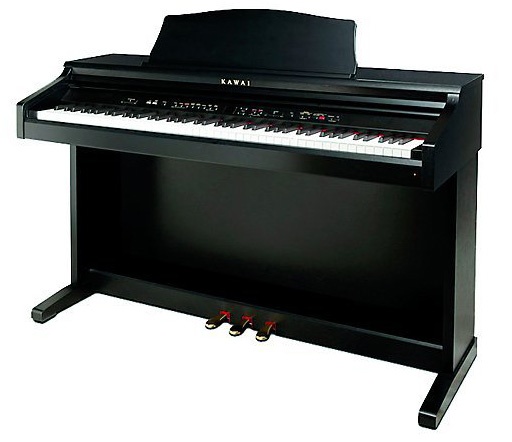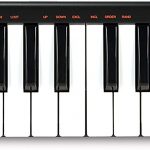Do you have a passion for playing the piano but get tripped up when it comes to sight-reading unfamiliar pieces? Sight-reading can be an intimidating and daunting task, especially if you’re new to pianos and just starting out. But don’t worry – this guide is here to make the process of learning to sight read easier and more fun! With a few tricks, tips, drills, and practice techniques, even beginners can become proficient readers in no time. We’ll cover how to assess difficult passages quickly while keeping your overall reading speed high so that you can take on any piece with confidence. So grab your music score and triangle pedal (or whatever other accessories are necessary) – let’s dive right in!
Understand the basic staff notation of a piano
Learning to read and understand staff notation is an important first step to becoming a skilled piano player. The staff notation system may seem complex at first, but with a little practice and guidance, it can become second nature. Each note on the staff represents a specific key on the piano, and the placement of the note on the staff indicates its pitch. Rests, key signatures, and time signatures are also important components of staff notation. By mastering this notation system, you’ll be able to read and play any piece of music written in standard notation. So why not take the first step towards an exciting journey in music? Dive into the basics of staff notation and unlock the potential of your piano playing skills.
Learn the standard fingering for various key signatures and chords
Learning the standard fingering for various key signatures and chords can take your piano playing to new heights. With this skill under your belt, you’ll be able to smoothly transition between different chords and scales without missing a beat. A solid understanding of fingering also helps with accuracy and precision when playing complex pieces. It can take some practice to get the hang of different fingerings, but once you do, you’ll notice a significant improvement in your playing and overall musicality. So don’t be afraid to take the time to learn and master these techniques – your fingers (and ears) will thank you!
Listen to a piece of music before sight reading it – get a sense of what it sounds like
As a musician, there are few things more exhilarating than the first time you lay your eyes on a brand new piece of sheet music. However, before diving headfirst into sight reading, it’s always a good idea to take a moment to listen to the piece in question. By doing this, you can get a sense of the melody, the tempo, and any significant changes that may occur throughout the song. Not only can this help to improve your overall performance, but it can also make the entire process much more enjoyable. So, next time you sit down to play a new piece, take a moment to close your eyes and really listen to the music – your ears (and your playing) will thank you!
Practice scanning ahead in the music to anticipate upcoming chords
As musicians, we all know the feeling of getting lost in a piece of music. Suddenly, you go from confidently playing the right notes to stumbling and fumbling. This is where scanning ahead in the music can come in handy. By anticipating the upcoming chords, you can mentally prepare yourself and avoid any sudden surprises. It takes practice, but once you get into the habit of scanning ahead, you’ll find that playing becomes easier and more enjoyable. So next time you sit down to play, try scanning ahead and see how it can improve your performance.
Develop memorization techniques to remember difficult sections of the song or passages you’ve already learned
Imagine being able to flawlessly sing a song from beginning to end, without pausing or stumbling over the lyrics. That level of musical mastery is attainable with memorization techniques that specifically target the most challenging sections. These techniques can help you to fully internalize the song, improving your confidence and performance abilities. Whether you’ve been playing an instrument for years or are just starting out, these memorization methods can help you effectively learn and retain even the toughest passages. With diligent practice and commitment to your craft, you can unlock your full musical potential and showcase your talents with ease.
Utilize practice exercises, such as scales and arpeggios, to improve your sight-reading skills
Learning how to sight-read music is a valuable skill for any musician to possess. While some people are born with a natural ability to look at a sheet of music and instantly play it flawlessly, others need to work diligently to improve their skills. One way to develop your sight-reading abilities is by using practice exercises like scales and arpeggios. Not only can these exercises help improve your hand and finger placement, but they also give you the opportunity to practice reading musical phrases in a consistent and repetitive manner. While practicing scales and arpeggios may seem tedious at first, the more you do it, the more comfortable and confident you will become with reading music, ultimately making you a better musician.
As you continue on your musical journey, keep these tips in mind to help sharpen your skills in piano sight reading. This is an invaluable skill and varies from person to person, so keep at it and see your progress improve. Not only does good sight-reading make learning complex pieces easier, but it also gives the opportunity to collaborate with other pianists and explore new music without missing a beat. Having a healthy practice regimen that includes technique exercises will also ensure that you stay sharp outside of actual performances. As always, be sure to never forget the joy of playing; musicality is all about having fun! Above all else, remember to take each piece of music one note at a time.

